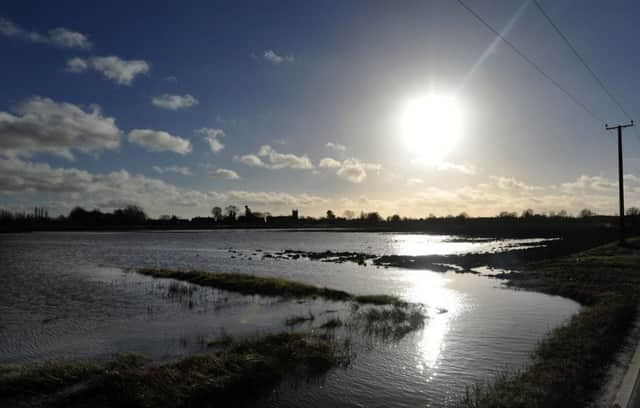Flood proofing our farms is vital


I recently spoke at a Water Summit, organised by the Yorkshire Food, Farming and Rural Network, which focussed on the issues of having too much, and too little, water. From my own perspective, farming beside the River Ouse, just where the River Wharfe joins, tends to focus the mind when it comes to flooding. Almost half the county flows past the farm and in recent years that half of the county has been busy generating ever more water, more often, and it travels much quicker.
So for my family’s business – I am third generation at Manor Farm – this is becoming by far our biggest challenge, with a third of the farm vulnerable.
Advertisement
Hide AdAdvertisement
Hide AdOur land acts as a buffer to protect Selby and local villages like Cawood, when needed, and farming where we are, we expect it to flood occasionally, but certainly not with the frequency we are seeing now. Since the year 2000 we have experienced six major flood events and I know of only five such events in the previous century. And when it floods we bear the costs; there is no compensation or insurance. Having looked at the recent scheme of government support, announced when the Thames started to wreak havoc, none of the funds available would fit our criteria.
The river systems in this country are managed, from the top of the hill to the sea, and have been for centuries. Unfortunately for the last 30 years that management has not adapted to the changes in topography and weather. We are also failing to recognize the vital long-term strategic importance of our most productive lower lying land.
Improving our management of water flow in river systems will have many benefits. It will involve a multi-disciplined approach and a combination of many smaller projects, as well as some larger civil engineering projects, and it is not just farms which will benefit, but the whole catchment too.
Most of the rain tends to fall in the hills and it is here that the most vital improvements can be made. Schemes to hold water back will not just help with flooding, but also with that other water issue, namely drought resilience. Flooding and drought affect habitats as well, so these will be both protected and in some cases created. Schemes could also generate electricity for local communities.
Advertisement
Hide AdAdvertisement
Hide AdMid-stream water flow needs to be maintained and kept clear, but multiple benefits can be gained through work here too. And we mustn’t forget water flowing upstream in the form of tides; December’s Humber surge might have been a relatively rare event, but there are worrying trends here also regarding extremes and frequency. As to rising sea levels, will someone remind me if we are doing anything to address this?
In the UK we produce enough food to feed around 40m people, when our population is over 60m, and the population is growing population. The 2012 floods affected 42,000 ha of lower lying productive farmland. A hectare can support at least ten people for a year, so that flooded area is food for nigh on half a million people. Given world trends in weather, sea levels, border disputes and population, what legacy can we afford to leave future generations?
Richard is a member of the Future Farmers of Yorkshire and an NFU office holder.